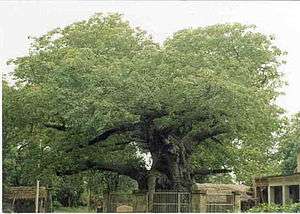Kintoor
| Kintoor | |
|---|---|
| town | |
 Kintoor Location in Uttar Pradesh, India | |
| Coordinates: 27°01′08″N 81°29′10″E / 27.019°N 81.486°ECoordinates: 27°01′08″N 81°29′10″E / 27.019°N 81.486°E | |
| Country |
|
| State | Uttar Pradesh |
| District | Barabanki |
| Languages | |
| • Official | Hindi, Urdu |
| Time zone | IST (UTC+5:30) |
| PIN | 225207 |
| Battle of Kintoor | |||||||
|---|---|---|---|---|---|---|---|
| Part of the Indian Mutiny | |||||||
| |||||||
| Belligerents | |||||||
|
East India Company Kapurthala State | Rebel Sepoys | ||||||
| Commanders and leaders | |||||||
|
Major A.Hume commanding 1st European Bengal Fusiliers Rajah of Kappurthullah commanding Kappurthullah contingent |
Collector Darakhaje Collector Abid Khan Major-General Abson Khan Mohamed Ameer Khan | ||||||
| Strength | |||||||
|
1st Bengal Fusiliers, 150 rank and file; 2nd Company 3rd battalion Artillery, two 9-ponder guns; Hodson's Horse, 56 sabres; Oude Military Police Cavalry, 200 sabres; Kappurthullah Contingent:- Artillery, five 8-pounder, three 6-ponderguns; Cavalary, 124 sabres; Infantry, 650 rank and file |
3,000 infantry 200–300 cavalry 4 guns | ||||||
| Casualties and losses | |||||||
|
4 wounded 1 horse killed, 7 wounded | 450 killed | ||||||
Kintoor or Kintur is a village distant 10 miles north-east of Badosarai in Barabanki district famous for battle of Kintoor of 1858 during Indian Mutiny.[1][2]
Battle of Kintoor
The Battle of Kintoor was a conflict between rebel sepoys and troops East India Company and Kapurthala State on 6 October 1858 during Indian Mutiny.[1][3][4]
British Raj
During 1869 census of Oudh, Kintoor was designated as one of the total thirteen large towns or kasbahs and Inspector of Police of Ram Nagar was appointed here on the night of census.[5]
Personalities
Literary
Urdu/Persian (19th century)
- Abd ul-Qadir Hanif-ud-Din Kintoori (d. 1789): a Sufi of Qadri order. His ancestors emigrated from Nishapur, Iran, and served as jurists. He was author of the book Kuhl ul-jawahir fi manaqib-i-'Abd ul-Qadir Jilani(1753).[6][7]
- Ayatollah Mufti Syed Muhammad Quli Khan Kintoori (1775-1844): principal Sadr Amin at the British court in Meerut. He was author of Tathir al-mu'minin 'an najasat al-mushrikin.[8][9][10][11]
- Syed Sirāj Ḥusayn Musavi Kintoori (1823-1865): son of Mufti Syed Muhammad Quli Kintoori, he was author of Kashf al-ḥujub wa-l-astār ʿan asmāʾ al-kutub wa-l-asfār, Shudhūr al-ʿiqyān fī tarājim al-aʿyān and Āʾīna-yi ḥaqq-numā.[8]
- Syed Iʿjāz Ḥusayn Musavi Kintoori (1825-1870),
- son of Mufti Syed Muhammad Quli Kintoori[8]
- Ayatollah Syed Mir Hamid Hussain Musavi Kintoori Lakhnavi (1830-1880): son of Mufti Syed Muhammad Quli Kintoori author of book Abaqat ul Anwar fi Imamat al Ai'imma al-Athar.[8][9][12][13][14][15]
- Qazi Mahmud Kintoori author of Mirat i Madari.[16]
Urdu/Persian (20th century)
- Justice Maulvi Syed Karāmat Ḥusayn Musavi Kintoori (1854-1917): son of Syed Iʿjāz Ḥusayn, he founded Karmat College, Lucknow.[8]
Others
- Seyyed Ahmad Musavi Hindi: Paternal grandfather of Ayatollah Khomeini. He was born in Kintoor.[12][17][18][19]
Attractions

Parijat tree at Kintoor, Barabanki
- Parijaat tree a sacred baobab tree on the banks of Ghaghra.[2][20]
- The famous Kunteshwar Temple – dedicated to Lord Shiva.[2][21]
References
- 1 2 Bulletins and other state intelligence, Part 1
- 1 2 3 http://barabanki.nic.in/places.htm
- ↑ House of Commons papers, Volume 43 By Great Britain. Parliament. House of Commons
- ↑ Bulletins and Other State Intelligence Compiled and Arranged from the Official Documents Published in the London Gazette
- ↑ The report on the census of OUDH, OUDH Government Press, 1869
- ↑ Dictionary Of Indo-Persian Literature, By Nabi Hadi
- ↑ Persian Literature: A Bio-Bibiographical Survey : Qur'Anic Literature; History and Biography : Biography Additions and Corrections Indexes, Volume 1, Part 2, by C.A. Storey
- 1 2 3 4 5 Scholarship in a sayyid family of Avadh I: Musavī Nīshāpūrī of Kintūr
- 1 2 Roots of North Indian Shi‘ism in Iran and Iraq Religion and State in Awadh, 1722–1859, by J. R. I. Cole, UNIVERSITY OF CALIFORNIA PRESS Berkeley · Los Angeles · Oxford
- ↑ Sacred Space and Holy War The Politics, Culture and History of Shi`ite Islam by Juan Cole, I.B.Tauris Publishers, LONDON - NEW YORK
- ↑ Dar al-Kitab Jazayeri
- 1 2 Islam, politics, and social movements By Edmund Burke, Ervand Abrahamian, Ira M. Lapidus
- ↑ Leader of Heaven #18
- ↑ Mir Hamid Hussain and his famous piece Abaqat al-anwar
- ↑ GHADEER-E-KHUM WHERE THE RELIGION WAS BROUGHT TO PERFECTION By I.H. Najafi, Published By A GROUP OF MUSLIM BROTHERS, NEW ADDRESS P. 0. Box No. 11365- 1545, Tehran – IRAN.
- ↑ Persian Literature – A Biobibliographical Survey ..., Volume 1, Part 2 By C. A. Storey
- ↑ From Khomein, A biography of the Ayatollah, 14 June 1999, The Iranian
- ↑ The Columbia world dictionary of Islamism By Olivier Roy, Antoine Sfeir
- ↑ Khomeini: life of the Ayatollah, Volume 1999 By Baqer Moin
- ↑ Wickens, Gerald E.; Pat Lowe (2008). The Baobabs: Pachycauls of Africa, Madagascar and Australia. Springer Science+Business Media. p. 61. ISBN 978-1-4020-6430-2.
- ↑ Kameshwar, G. (2006). Bend in the Sarayu: a soota chronicle. Rupa & Co. p. 159. ISBN 978-81-291-0942-2.
External links
- http://offerings.nic.in/directory/adminreps/viewGPmapcvills.asp?gpcode=48746&rlbtype=V
- http://ourvillageindia.org/Place.aspx?PID=562564
- http://maps.google.co.uk/maps?ll=27.01504,81.483387&z=12&t=h&hl=en
- https://online.omms.nic.in/ASPNet/citizens/DG/05DVC/CensusStatus.aspx?state=UP&district=13&block=13&reportLevel=3
- The British Empire – Indian Mutiny 1857–58
- Google Books – Battle at Kintoor
- "Indian Mutiny" by Saul David 2002 ISBN 0-14-100554-8
- Shi'a Islam in Colonial India: Religion, Community and Sectarianism By Justin Jones
- Inextlive Editorial Team (4 Jun 2014). "आयतुल्लाह ख़ुमैनी का बाराबंकी कनेक्शन (Hindi)". Inextlive.com. Retrieved 5 June 2014.
This article is issued from Wikipedia - version of the 9/22/2016. The text is available under the Creative Commons Attribution/Share Alike but additional terms may apply for the media files.